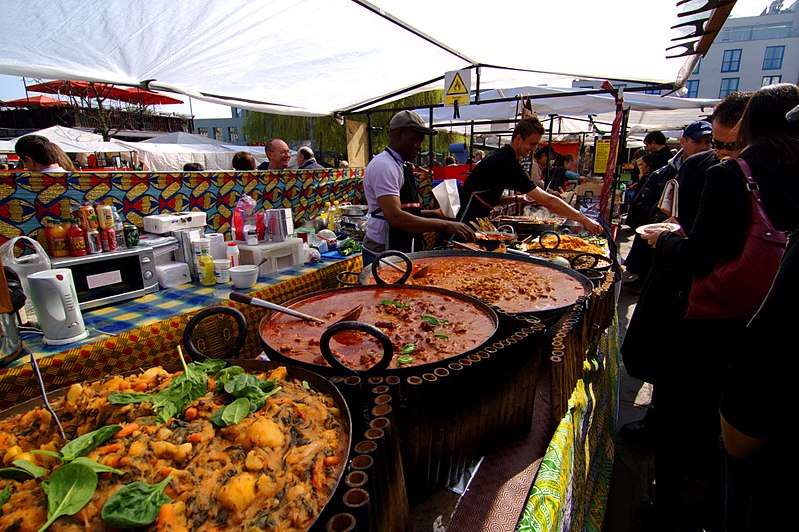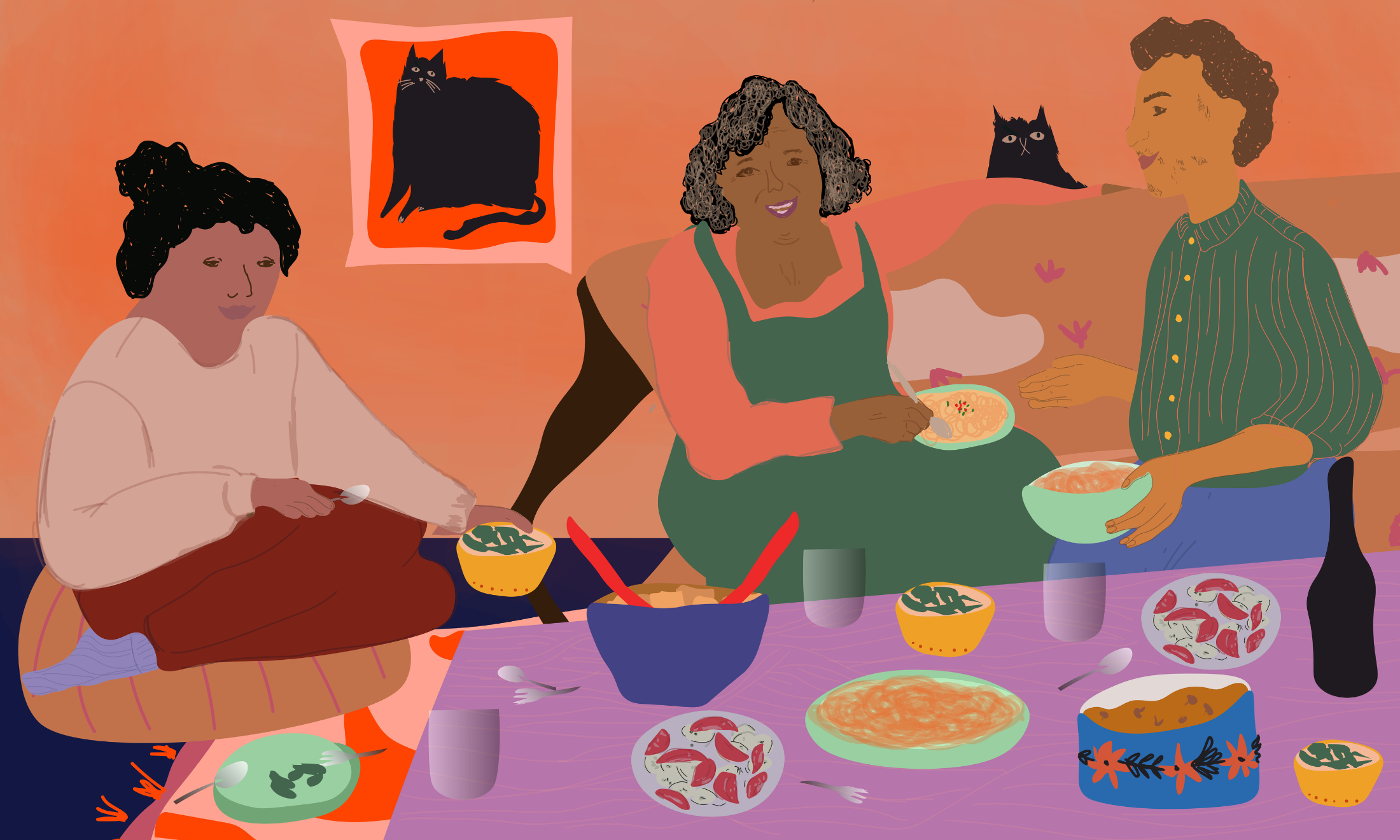
The flavours of home: how food can be used as a social glue for African diaspora communities
Stephanie Ahemor
30 Jan 2018
A tray of freshly fried fish full of various flavours sits on a gleaming silver platter. Colourful rings of sweet peppers, bright red, yellow and green, lay over the fish interlaid with tangy onions. This is one dish amongst many others spread out on the table. Freshly steamed basmati rice, bubbling bowls of hot tomato stew filled with whatever meat you desire and of course platters of grilled chicken and sweet plantain. Riotous laughter rings out among the general hubbub of chatter as a multitude of hands descend upon the food.
Amongst the community of people who emigrated from African countries in the 80’s and 90’s, citizens of Ghana, Nigeria and Congo amongst others, food was a social glue. Friends were made as recipes were shared and fond memories of home were evoked as the spicy scents of exotic spices filled the air.
“I wasn’t about to explain or justify my consumption of offal to anyone”
In my household growing up, Saturday mornings were for cooking. A big batch of tomato stew would be made and your options for weeknight dinners for the upcoming week would be rice and stew or… rice and stew. If the stew to be made that Saturday were to be filled with cow foot and tripe then come Friday night the house would be filled with steam, drops of condensation running in rivulets down the wallpaper.
After school my best friend Suze and I would drag our feet home looking for diversions. When we were done browsing the aisles of Debenhams for the third time that week, we would deliberate on whose house we would spend the evening at. On a Thursday night I was down to hang out at my house, but on Friday’s we always went to Suze’s as I contemplated the smells lingering in my house with meat and innards simmered away to juicy softness. I wasn’t about to explain or justify my consumption of offal to anyone.
When I shadowed my mum on those Saturday mornings gaining my apprenticeship in Ghanaian cooking, I would pepper her with questions. “Why do you crack eggs into spinach stew?” I would ask. My mum would let me know that the dish is traditionally made with melon seeds but when she first came to the UK she couldn’t find any. She experimented with eggs as the cooked egg gives the same texture to the stew and has since maintained the adaptation even though melon seeds are now available.
I remember the huge vats of farina and mashed potato flour, combining them in exact quantities and coating the kitchen in a fine snow-like scattering in order to make a replica of fufu destined to take its place in a steaming hot bowl of spicy soup.
“Businesses have also sprung up from hardy entrepreneurs who now provide the diaspora community with food from home”
My dad reminisces that back in the 90’s, he and a friend would take a train to Essex and buy a whole animal, a sheep or cow depending on the funds. They would drag the carcass home on public transport and butcher it themselves haphazardly in the kitchen, splitting the portions of meat between two families.
20 years ago, this was the most economical way they could buy meat and it also ensured that it was fresh. Unlike the plastic packages in supermarkets that many immigrants were wary of, it was incomparable to the familiarity of eating meat from an animal which had been running around the yard mere hours before consumption.
We’ve come a long way since then and with the waves of immigration, businesses have also sprung up from hardy entrepreneurs which provide the diaspora community with food from home. Improvements in importation mean that prices are affordable and the food that was eaten “back home” can be eaten every day in the UK.
When visiting a small town in the Bavarian region of Germany a couple of years ago, I was shocked to discover that one small shrivelled up tuber of yam cost 10 euros! We had travelled across town to the downtown slums to purchase this yam, to say that it was a rare treat is an understatement. I’ve since stopped complaining about paying two for £5 for puny yam in London.
“The influence of Anglo traditions on African food has led to innovative trends that mean African cuisine is open to all”
Now restaurants catering to the diaspora have sprung up all over urban cities and towns in the UK. A Ghanaian restaurant is within a 15 minute drive of my Zone 6 London suburb and a Nigerian takeaway is within walking distance, smoky party jollof rice at my convenience in minutes.
The influence of Anglo traditions on African food has led to innovative trends that mean African cuisine is open to all. Just as Indian and Chinese food have become mainstays of the British diet, the aim from an increasingly conscious and self-aware generation is that food from Nigeria and Ghana should also become mainstream, another dining option, following in the footsteps of Ethiopian eateries and South African cafes.
I Go Chop is a Nigerian takeaway in Camberwell, London which offers a modern twist on a classic favourite, jollof rice and beans are wrapped up in a portable burrito. Chuku’s offers a Nigerian tapas experience in pop-up’s all over London. And of course, the infamous Zoe’s Ghana Kitchen makes Ghanaian food accessible to all and introduces a niche cuisine to the general public.
I love the fact that these ancient recipes are no longer the preserve of guarded families passed down from grandmother to daughter through the generations. However, with the rise of technology I’m only a few clicks away from learning how to cook the special dish of an isolated tribe.
The blend of old and new, of African and European, means that for dinner tonight I’m having salmon with chilli flakes, potatoes and steamed carrots with a side of spicy tomato stew. The best of both worlds is right at my fingertips.









